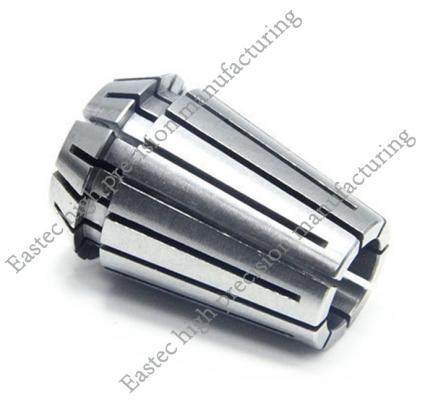I. Importance and Current Situation of Dimension Marking
In the field of mechanical design, dimension marking is regarded as the “language of engineering drawings”, and its importance is self - evident. It not only affects the convenience of relevant personnel in reading drawings but also directly impacts the accuracy of product processing. However, there are many problems with current dimension marking. Industry statistics show that about 35% of processing errors are due to dimension - marking mistakes, and the error rate of novice engineers is as high as 60%. Many novices often don't know where to start when facing complex parts.
II. Principles of Reasonable Dimension Marking
1. Directly Mark Important Dimensions
Important dimensions refer to those that affect the function, assembly relationship, or performance of parts. Direct marking can avoid calculation errors and ensure processing accuracy. For example, for a gear part, the diameters of the addendum circle, dedendum circle, and pitch circle, which are key dimensions, should be directly marked rather than derived from other dimensions. This allows processing personnel to accurately obtain key information.
2. Avoid Marking Closed Dimension Chains
A closed dimension chain is formed when dimension markings create a closed loop, which can lead to the accumulation of dimensional errors and affect processing accuracy. When marking a rectangular part, only mark the length and width instead of the diagonal dimension to avoid forming a closed loop, ensuring the independence and accuracy of each dimension and reducing processing errors.
3. Consider Measurement Convenience
Dimension markings should facilitate measurement. For a cylindrical part, marking the diameter and length is more appropriate than marking the radius and length because it is more convenient to measure the diameter with a caliper, which can improve measurement efficiency and accuracy and make the processing process smoother.
4. Conform to the Processing Sequence
It is important that dimension markings are consistent with the processing sequence. For a stepped shaft part, first mark the diameter of the large end, then the small end, and finally the lengths of each section, which is in line with the processing sequence of machining the large end first and then the small end. This enables processing personnel to operate according to the marked sequence and improves processing efficiency.
5. Consider the Processing Method
Different processing methods have different requirements for dimension marking. For parts processed by milling, dimension markings should be based on the processing datum plane as much as possible; for parts processed by turning, the axis should be used as the datum. Such markings can meet the requirements of different processing methods and ensure processing quality.
6. Dimension Marking Methods for Common Holes in Parts
The dimension markings of common holes need to comply with standards. For ordinary threaded holes, mark the major diameter, minor diameter, and pitch of the thread; for smooth holes, mark the hole diameter and depth. Standardized markings allow processing personnel to accurately machine the hole dimensions and ensure the assembly and usability of parts.
III. Principles of Dimension Marking for Complex Parts
1. Marking of Overall Dimensions of Parts
Marking the overall dimensions allows people to quickly understand the approximate scope of the part and have an intuitive understanding of the whole. For example, for a complex mechanical housing, marking the maximum dimensions in the length, width, and height directions enables relevant personnel to quickly grasp the size of the part, providing a basic framework for subsequent design and processing.
2. Marking of Local Dimensions of Parts
Mark local dimensions one by one from left to right and from top to bottom, which can effectively avoid omissions or duplications. For a part with multiple bosses and grooves, first mark the dimensions of the left - side bosses and then the right - side grooves to ensure that each local part is accurately marked and the drawing is complete and clear.
3. Principles of Local Dimension Marking
Local dimension marking follows the principle of first positioning and then shaping. First, mark the positioning dimensions to determine the position of local features, and then mark the shape dimensions to determine their size. When marking, select dimension datums. There should be at least one datum in each of the length, width, and height directions, usually using the bottom surface, end surface, etc. as datums. For a part with threaded holes, first mark the center position of the holes and then the diameter and depth.
IV. Three - Step Disassembly Method for Marking Complex Parts
1. Establish a Datum System
Establishing a datum system is the basis for marking complex parts. For example, for a box - type part, the bottom surface can be used as the height datum, the symmetrical center line as the length datum, and the front end surface as the width datum. Defining the datums in each direction provides a stable reference for subsequent markings, ensuring the accuracy and consistency of dimension markings.
2. Feature Grouping
Feature grouping can be carried out according to the different functions and structures of parts. For a box - type part, it can be divided into groups such as main contour dimensions, mounting flanges, bearing hole systems, oil passage holes, and reinforcing ribs. This kind of grouping makes the markings more organized, facilitating processing personnel to understand the structure and function of each part of the part and improving processing efficiency.
3. Positioning - Shaping Marking
Specific parameters need to be clearly defined for positioning and shaping markings. For a bearing hole group, the positioning markings include a hole center distance of 120±0.05 and a symmetry of 0.02 to determine its position accuracy; the shaping markings are Φ60H7 and a depth of 30 + 0.1 to define its shape and size. Accurate positioning and shaping markings can ensure the assembly and usability of parts.
V. Self - Inspection Form for Dimension Marking
1. Integrity of the Datum System
The qualification standard is that there are clear datums in three orthogonal directions, which can ensure a stable reference for dimension markings and the accuracy of part processing. The three - coordinate measurement report can be used as a detection tool, which can accurately measure the dimensional and positional relationships of parts in each direction to determine whether the datum system is complete.
2. Openness of Dimension Chains
The qualification standard requires that there is only one open dimension chain in each direction to avoid the accumulation of errors caused by closed dimension chains. Dimension chain analysis software can be used for detection. This software can conduct a detailed analysis of dimension chains to determine whether they meet the openness requirements and ensure processing accuracy.
3. Tolerance Matching
The qualification standard is that the IT accuracy grade matches the processing method, which can ensure the processing quality and performance of parts. The process capability index CPK can be used as a detection tool. By calculating this index, the stability and capability of the processing process can be evaluated to determine whether the tolerance is suitable for the processing method.
4. Measurability of Markings
The qualification standard is that 90% of the dimensions can be directly measured with conventional measuring tools to ensure the practicality and operability of dimension markings. The detection can be based on the detection plan review form, which comprehensively evaluates the marked dimensions to check whether they meet the measurability requirements and improve processing efficiency.
VI. Expert Suggestions (with a Quick - Reference Rhyme for Marking)
1. Hierarchical Management of Markings
Display dimensions in layers according to the processing sequence, which can make the drawing clear and easy to read. Display the dimensions required for different processes in layers, such as rough - machining dimensions and finish - machining dimensions. Use different colors or line types to distinguish each layer of dimensions, so that processing personnel can quickly find the dimensions corresponding to the process, improving processing efficiency and avoiding mistakes caused by dimension confusion.
2. Tolerance Matching Principle
Directly mark the dimensions with IT6 accuracy grade to ensure the high - precision requirements of parts. This accuracy grade has a significant impact on the performance and assembly relationship of parts. Direct marking can avoid calculation errors, allowing processing personnel to clearly understand the accuracy requirements and adopt appropriate processing techniques and equipment to ensure that parts meet the design standards.
3. Golden Rule for Drawing Review
“Three Checks and Three Verifications” means checking the datums, checking the dimension chains, and checking the tolerances. When checking the datums, ensure that the datums in three orthogonal directions are clear; when checking the dimension chains, ensure that they are open to avoid error accumulation; when checking the tolerances, ensure that the IT accuracy grade matches the processing method. Through strict review, problems in dimension markings can be found in time and the quality of the drawing can be improved.
4. Three - Character Rhyme for Dimension Marking
“Select datums, determine priorities” means choosing good dimension datums and determining important and secondary dimensions; “Mark key points, indicate with red frames” means using red frames to mark key dimensions; “Avoid closed, open chains” means avoiding closed dimension chains; “Divide layers, follow processes” means marking dimensions in layers according to the processing sequence; “Verify with tools, fit tolerances” means verifying dimensions with measuring tools and making tolerances appropriate; “Review thrice, problems gone” means reviewing multiple times to eliminate problems.





 Customer service 1
Customer service 1  Customer service 2
Customer service 2